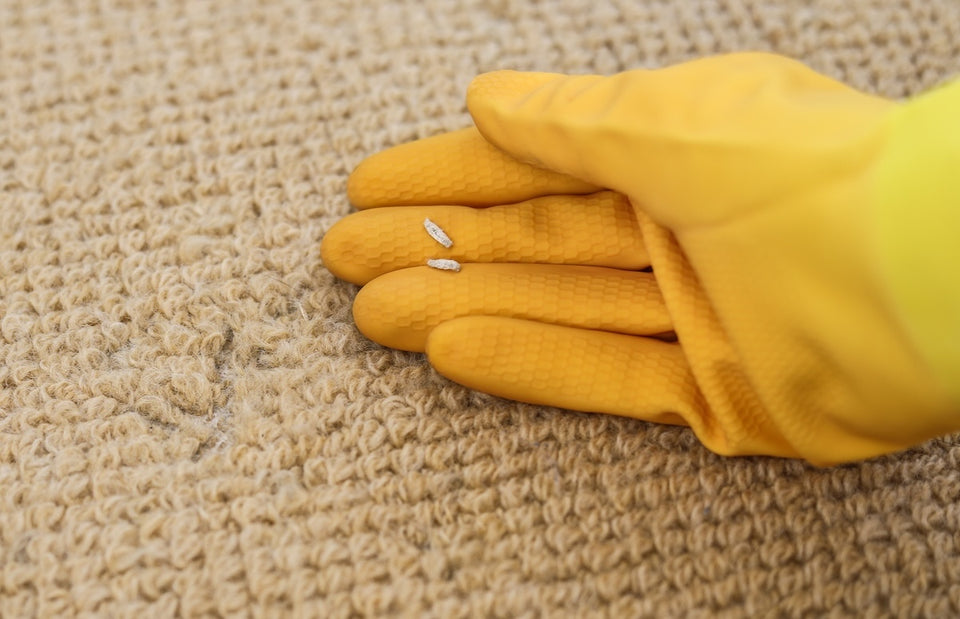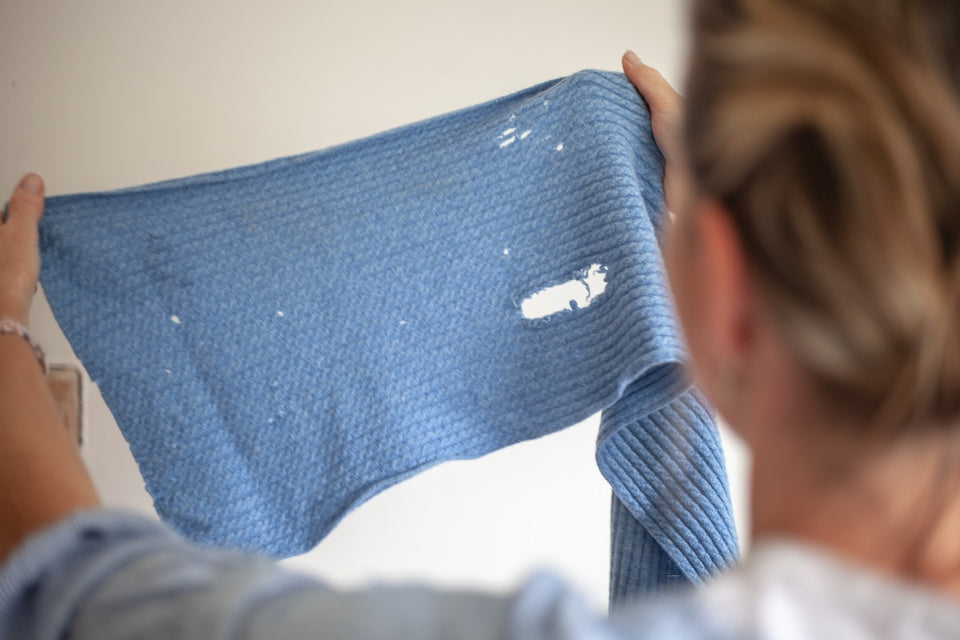All You Need to Know About the Moth Life Cycle of Clothes and Carpet Moths

Clothes Moths (Tineola bisselliella) and Carpet Moths (Trichophaga tapetzella) are common textile pests with a destructive life cycle. Their presence in homes often goes unnoticed until holes appear in cherished sweaters or threads unravel from carpets. Understanding each stage of their lifecycle is the foundation of any successful prevention or treatment plan.
The Egg Stage
Adult female moths can lay between 40 and 100 eggs over a span of a couple of days. These eggs are tiny (less than 0.5 mm in size) and usually laid directly onto fabrics such as wool, silk, fur and feathers. These materials contain a protein called keratin which the moth larvae will eat once hatched.
The time it takes for the eggs to hatch depends on environmental conditions. In warm, humid homes, they can hatch within 4 to 10 days. In cooler or dryer conditions, hatching may take up to three weeks. Importantly, eggs are laid in undisturbed, dark areas, for instance the corners of closets, the folds of garments, under beds, and within thick carpet pile.
The Larval Stage: The Most Destructive Phase

Once hatched, larvae become the true culprits of damage. These cream-coloured caterpillar-like insects feed exclusively on animal-based fibers that contain keratin, a protein they need for development. This includes wool, cashmere, silk, mohair, feathers, and even soft leather. Clothes Moth Larvae can feed for anywhere from two months to over two years, depending on temperature, humidity, and food availability.
In ideal indoor conditions, larvae often go undetected as they chew through garments, carpets, or upholstery. Their feeding trails are sometimes accompanied by fine webbing, small white casings, and granular droppings known as frass. These signs, while subtle, are the most visible indicators of an active infestation.
Larvae prefer soiled fabrics over clean ones. The presence of body oils, perspiration, food and blood stains, or even pet hair can make a garment significantly more attractive to egg-laying moths. This is why worn but unwashed items in storage are particularly vulnerable. Cotton based materials can also be vulnerable to hungry moth larvae if they are stained or dirty.
The Pupal Stage
Once larvae have consumed enough keratin, they spin silk cocoons and enter the pupal stage. The cocoon offers protection while the insect undergoes metamorphosis, transforming into an adult moth. This stage lasts from seven to fifty days, depending on environmental conditions.

Pupae are often difficult to spot. They are typically found in the same quiet, dark areas as the larvae - behind baseboards, beneath furniture, or deep in closet corners. Like the egg and larval stages, they require very little space and can survive long periods if undisturbed.
The Adult Stage
Adult Clothes and Carpet Moths are small (usually less than 1 cm in length) and they do not feed. Their sole purpose is reproduction. Males are more active and may fly in short bursts to find mates, while females tend to remain near the site of their emergence, releasing pheromones to attract partners.
The adult stage is short-lived, often lasting only 4 to 10 days, however in some cases they can live up to a year. In that time, mating occurs, and the female begins laying eggs - usually on or near the fabric from which she emerged as a larva. This means untreated infestations can quickly become self-perpetuating.
In the US moths are most active between Spring and early Summer. However, with modern heating and insulation, infestations can occur year-round in warm homes.
Why Understanding the Life Cycle Matters
Treating moth infestations effectively requires disrupting multiple stages of the lifecycle. While pheromone traps are useful for catching adult males, they do not affect larvae or pupae. This is why combining multiple approaches, like regular cleaning, dry cleaning or freezing vulnerable garments, and using moth traps, is essential for long-term success.

For example:
- Vacuuming and washing helps eliminate eggs and larvae from fabrics and flooring.
- Freezing infested items for 72 hours at -18°C will kill larvae and eggs.
- Moth traps attract and capture adult males, reducing the presence of moths by breaking the breeding cycle.
Knowing that larvae can live for months, or even years, means that a one-time treatment is rarely enough. Regular inspection and prevention should be ongoing, especially in closets, under furniture, and anywhere fabrics are stored long-term.
Environmental Factors that Influence Moth Activity
Warmth, darkness, humidity, and poor air circulation all contribute to a thriving moth population. Larvae thrive in temperatures between 68-77°F, particularly in areas with limited airflow. Closets, under-bed storage, lofts, and carpeted corners offer ideal conditions.
Synthetic fabrics like polyester and acrylic are not digestible for Clothes Moth Larvae — but if these items are dirty or blended with animal-based fibers, they can still attract egg-laying females.
Storing textiles and clothing in plastic bags gives moths the ideal environment because the larvae need moisture to thrive.
Final Thought: Breaking the Cycle
The lifecycle of Clothes and Carpet Moths can be short and explosive or long and insidious. A single female moth can start a chain reaction that leads to months of damage, often hidden until it’s too late.

Breaking the cycle means acting at every stage. Inspect stored garments regularly, use breathable cotton storage, monitor with traps, and clean thoroughly, especially in quiet corners of the home. At MothPrevention, we provide science-backed solutions and expert guidance to help you stop moths before damage starts.
If you’ve spotted signs of infestation, now is the time to act.
About MothPrevention
MothPrevention® speak to customers every day about their clothes moth issues - clothes moths are a species that are ever increasing and that can cause significant damage to clothes, carpets and other home textiles.
To date, we’ve helped over 250,000 customers deal with their moth problems. We have developed professional grade solutions including proprietary pheromones and trap design, not available from anybody else in the USA.





